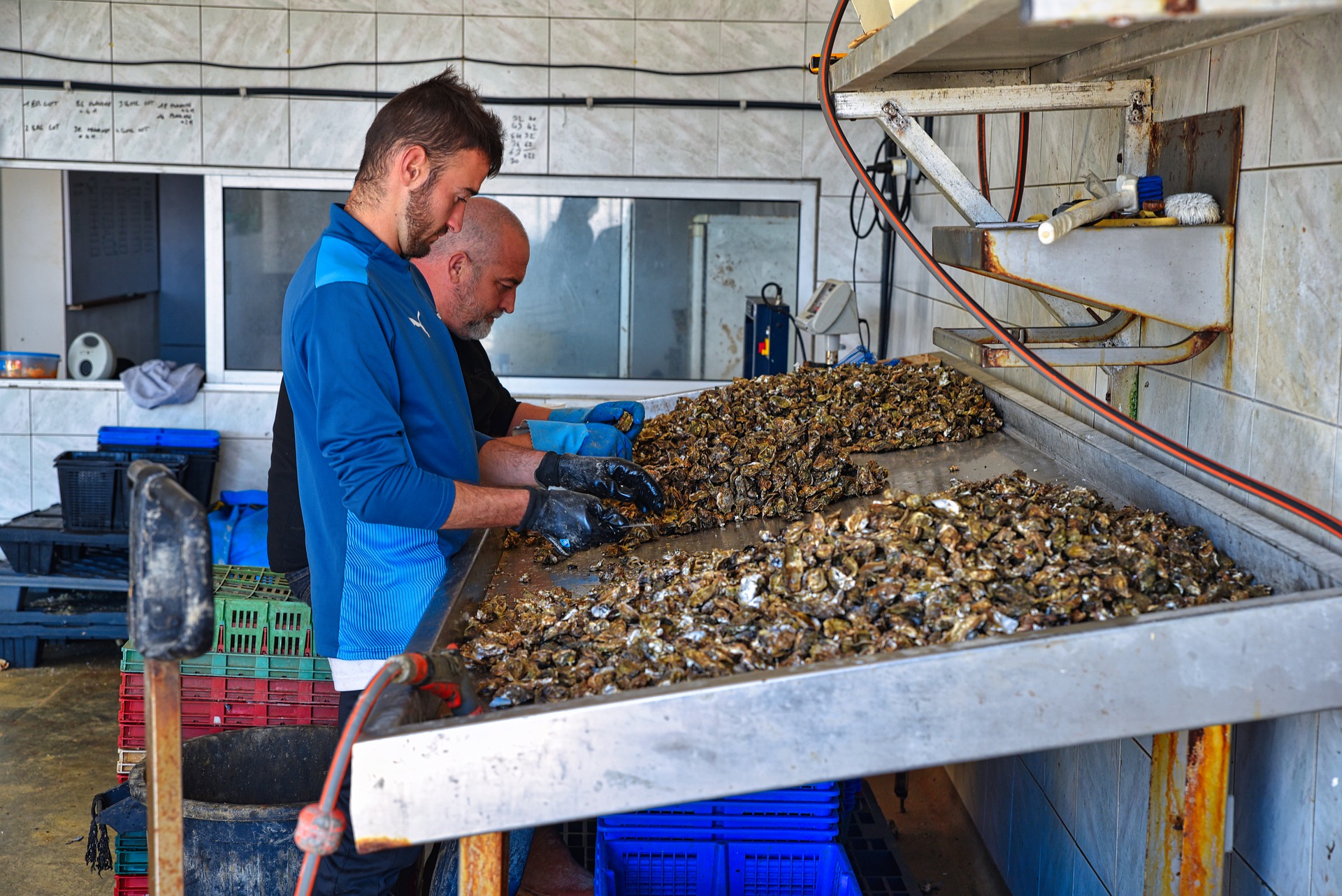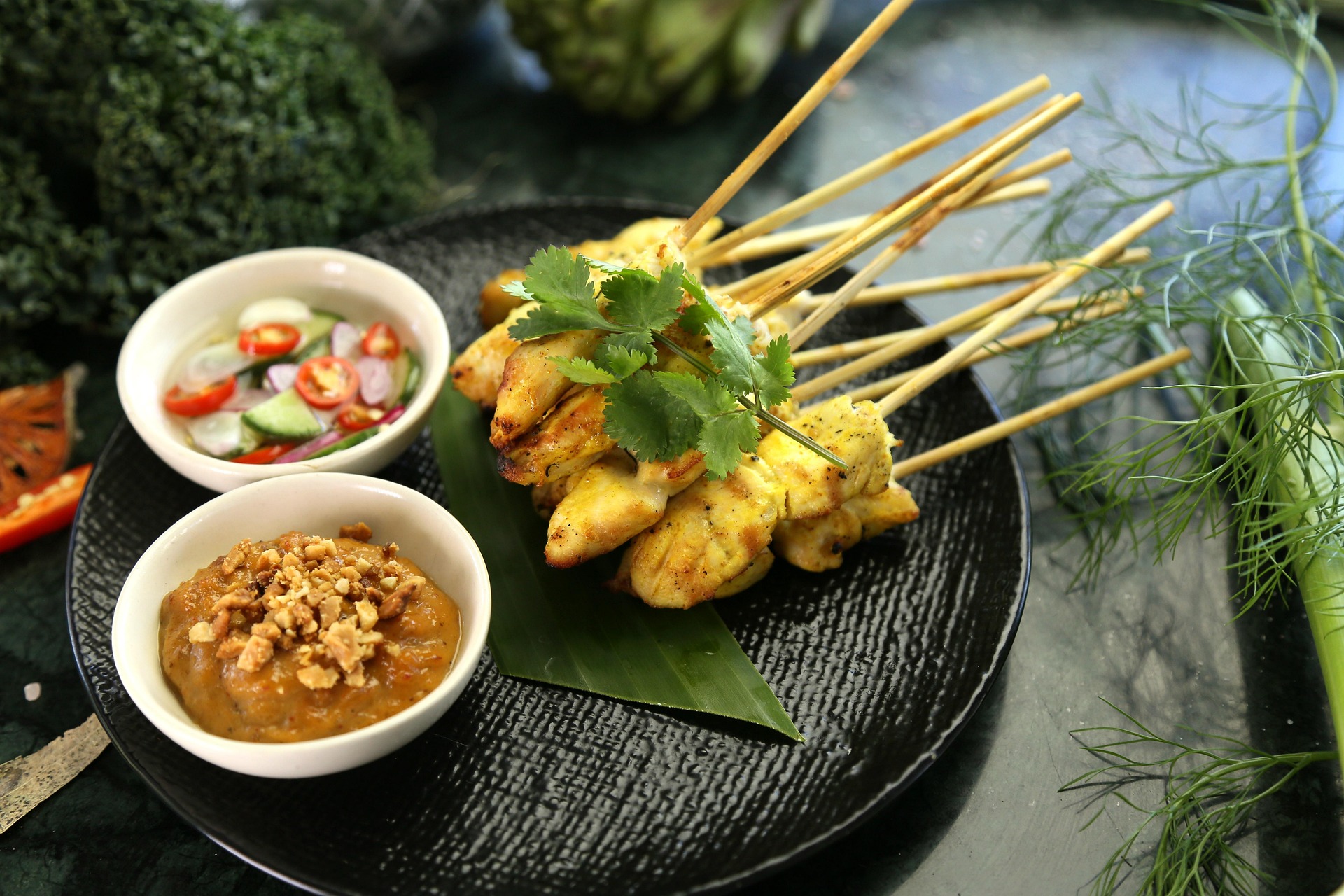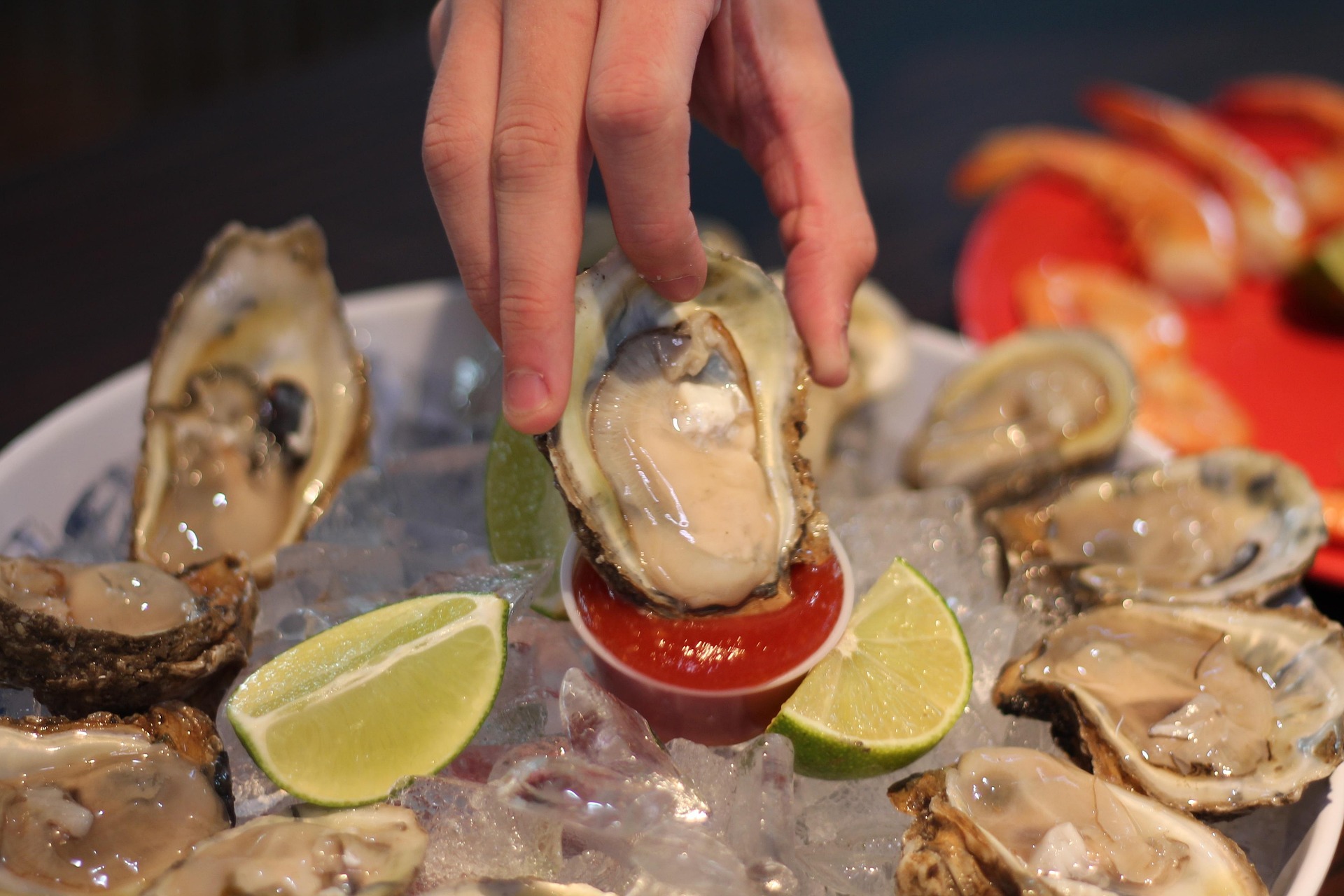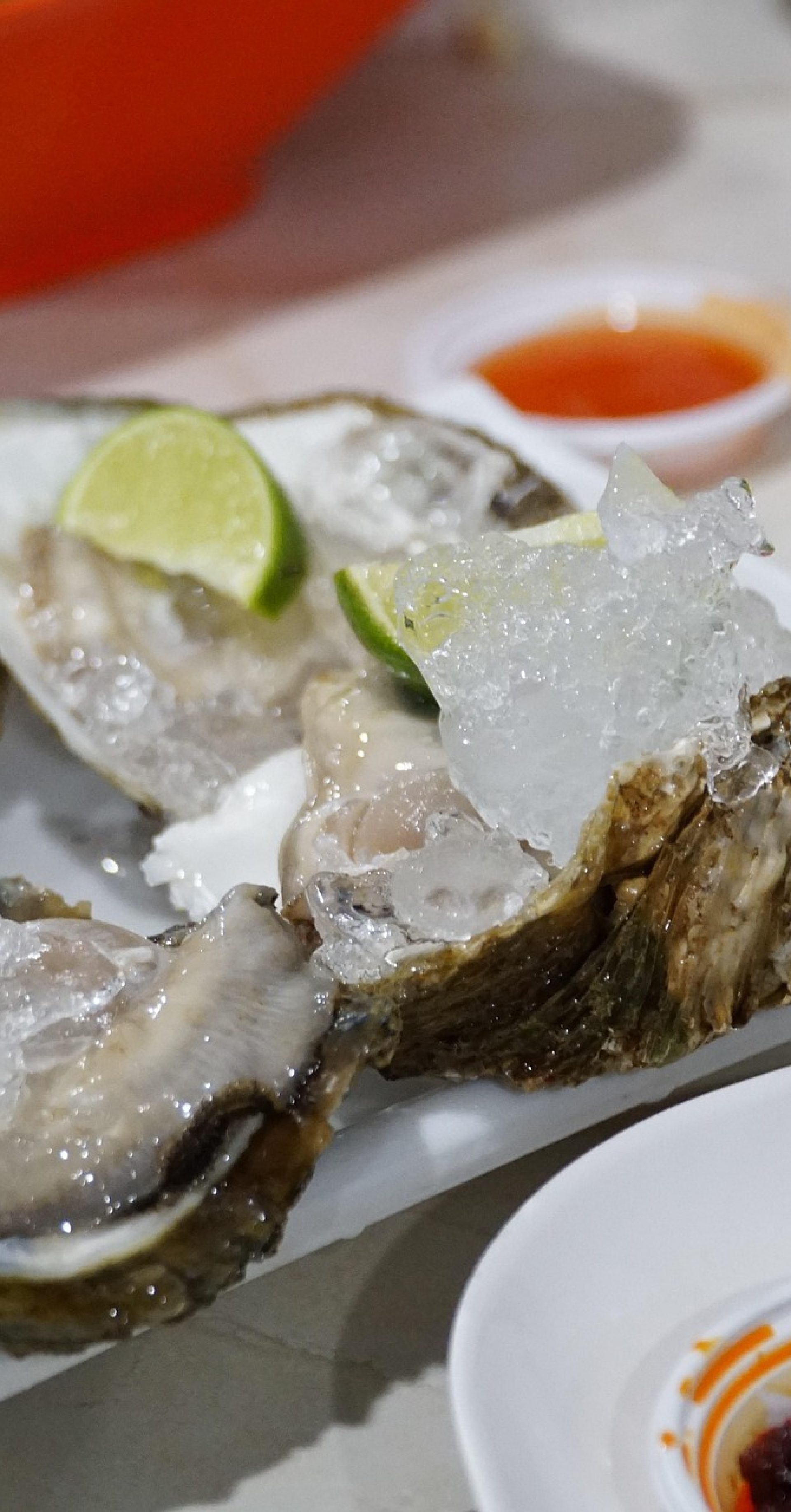Rocky Mountain Oysters: The Unconventional Delicacy of the American West
When it comes to unique culinary traditions, few dishes spark as much curiosity—and hesitation—as Rocky Mountain Oysters. Despite the name, these “oysters” don’t come from the sea. Instead, they are a deep-fried delicacy made from the testicles of bulls, pigs, or sheep, often associated with ranching communities in the American West.
What Are Rocky Mountain Oysters?
Rocky Mountain Oysters are a byproduct of livestock castration, a common practice on ranches. Rather than wasting these parts, resourceful ranchers turned them into a tasty snack. The dish is most popular in regions like Colorado, Montana, and Wyoming, but its fame has spread far beyond the Rockies.
These “oysters” are typically prepared by peeling and slicing the testicles into thin medallions, coating them in seasoned batter, and frying them until golden and crispy. The result is a tender, flavorful dish that has earned a place in the hearts—and on the plates—of adventurous eaters.
A Cultural Staple
Rocky Mountain Oysters are more than just a quirky food item; they’re a cultural symbol of the rugged, resourceful spirit of the American West. Events like the annual “Testicle Festival” in Montana celebrate this unusual dish with gusto, attracting tourists and locals alike for a day of feasting, music, and fun.
In addition to festivals, Rocky Mountain Oysters are a common feature at local bars and steakhouses, often served with dipping sauces like cocktail sauce, ranch dressing, or hot sauce. They’re typically enjoyed as an appetizer, paired with a cold beer.
Why Eat Them?
You might wonder why anyone would eat something so unconventional. For many, it’s about embracing local traditions and stepping out of their culinary comfort zones. Others enjoy them for their unique taste and texture. And for ranchers, it’s a practical way to use every part of the animal, honoring a long-standing philosophy of minimizing waste.
How to Try Rocky Mountain Oysters
If you’re ready to give Rocky Mountain Oysters a try, look for restaurants and festivals in Western states. They’re often labeled as a specialty item on menus, so don’t be shy about asking your server for recommendations. Alternatively, adventurous home cooks can find fresh or frozen testicles at specialty butchers or meat markets and prepare them at home.
A Dish Worth Exploring
Rocky Mountain Oysters may not be for everyone, but they’re a testament to the creativity and resilience of ranching communities. Whether you try them for the novelty or end up loving them for their flavor, these “oysters” are a one-of-a-kind culinary adventure worth exploring.
So, the next time you’re traveling through the Rockies, why not order a plate and experience a piece of Western tradition for yourself? You might just surprise your taste buds—and gain a great story to tell.
Are Rocky Mountain Oysters and calf fries the same thing?
Yes, Rocky Mountain Oysters and calf fries are essentially the same thing, though the terms are used in different regions and contexts. Both refer to deep-fried testicles from livestock, typically cattle. However, there are subtle differences in how they’re named and prepared:
- Regional Terminology:
- Rocky Mountain Oysters is the term most commonly used in the Western United States, especially in states like Colorado, Montana, and Wyoming, where ranching is a major part of the culture.
- Calf Fries is more commonly used in the Southern United States, particularly in states like Texas and Oklahoma.
- Source of the Testicles:
While both names often refer to cattle testicles, Rocky Mountain Oysters can sometimes include testicles from other animals, such as sheep or pigs, depending on the recipe or availability. - Cooking and Serving Styles:
Both are typically peeled, sliced, battered, and deep-fried, but the seasoning and accompanying sauces may differ based on regional preferences. For example:- In the West, they might be served with cocktail or horseradish sauce.
- In the South, calf fries might be paired with cream gravy or ranch dressing.
Cultural Similarities
Despite the differences in name, both dishes share a common origin rooted in ranching culture, where resourcefulness and minimizing waste were essential. They are considered delicacies in their respective regions and are often served at festivals, fairs, and specialty restaurants.
Whether you call them Rocky Mountain Oysters or calf fries, both are unique culinary experiences that showcase the creativity of rural cooking traditions.
Why did people start eating Rocky Mountain Oysters?
People started eating Rocky Mountain Oysters out of necessity, resourcefulness, and a desire to minimize waste. This dish originated in ranching communities where livestock castration was a routine practice to improve meat quality, control breeding, and manage livestock. Rather than discarding the testicles, ranchers found a way to turn them into a palatable and protein-rich food source. Here are the key reasons why people began eating them:
1. Waste Not, Want Not
Ranchers and farmers had a practical approach to using every part of an animal. In times when food resources were scarce or expensive, throwing away perfectly edible parts of the animal was seen as wasteful. This philosophy led to the creation of dishes like Rocky Mountain Oysters.
2. Sustainability and Self-Sufficiency
For rural communities, especially in the American West, food was often sourced directly from the land or livestock. Eating testicles was a way to make use of every part of the animal, reflecting a sustainable approach to ranching.
3. Culinary Experimentation
Over time, people found creative ways to prepare otherwise unappealing parts of animals. Frying the testicles with seasoned batter turned them into a flavorful and crispy dish, masking their original texture and flavor. This made them more appealing and accessible.
4. Cultural Traditions
As ranching became a cornerstone of Western life, Rocky Mountain Oysters turned into a cultural symbol. They were often served as part of celebrations or gatherings, fostering a sense of community and tradition.
5. Novelty and Curiosity
Rocky Mountain Oysters eventually gained popularity not just out of necessity but also as a unique culinary experience. Adventurous eaters and tourists began seeking them out for their novelty and to connect with Western culture.
6. Protein-Rich Food Source
Testicles are high in protein and other nutrients, making them a valuable addition to diets when other sources of protein were less accessible.
A Legacy of Resourcefulness
What began as a practical solution to avoid waste has evolved into a celebrated regional delicacy. Today, Rocky Mountain Oysters are enjoyed not just for their taste but also as a way to honor the ingenuity and traditions of ranching communities.
What state eats Rocky Mountain Oysters?
Rocky Mountain Oysters are primarily associated with the American West and are enjoyed in several states where ranching and livestock farming are a central part of the culture. The states most famously known for consuming Rocky Mountain Oysters include:
1. Colorado
Colorado is arguably the state most associated with Rocky Mountain Oysters. Denver, in particular, is known for serving them in bars, steakhouses, and festivals. Many restaurants in the state feature them as a specialty item, and they are a must-try for adventurous tourists.
2. Montana
Montana is home to the famous Testicle Festival, an annual event where Rocky Mountain Oysters take center stage. This state celebrates its ranching heritage with gusto, and the dish is widely available.
3. Wyoming
As another ranching hub, Wyoming embraces Rocky Mountain Oysters as a symbol of its cowboy culture. They’re often served at local bars and rodeo events.
4. South Dakota
South Dakota, with its strong agricultural roots, is another state where Rocky Mountain Oysters are commonly found. They’re particularly popular at fairs and ranching-related gatherings.
5. Nevada
Nevada, particularly in rural areas with ranching traditions, also enjoys Rocky Mountain Oysters. They’re often served at cowboy-themed events and steakhouses.
6. Oklahoma and Texas
Although they are more commonly called calf fries in the South, the concept is the same. Oklahoma and Texas, with their rich cattle ranching history, also include these as a regional delicacy.
Cultural Celebrations and Tourism
Rocky Mountain Oysters have become a novelty dish, drawing tourists and food enthusiasts to these states to experience a taste of ranching life. Whether served as an appetizer in restaurants or as a highlight at festivals, they remain a unique culinary tradition in ranching communities.

How do they harvest Rocky Mountain Oysters?
Harvesting Rocky Mountain Oysters involves the process of castrating livestock—a common practice on ranches. Castration is performed to improve the temperament and meat quality of male animals, such as bulls, pigs, or sheep. The testicles removed during this process are the “oysters” that eventually become the famous dish. Here’s how they are harvested:
1. Castration Process
Castration is usually performed when the animals are young, often within a few months of birth. There are a few methods for castration:
- Surgical Castration:
A small incision is made in the scrotum, and the testicles are removed manually. This is the most common method used on ranches. - Banding:
A rubber band is applied tightly around the base of the scrotum, cutting off blood supply to the testicles, which eventually fall off. However, this method is less likely to produce Rocky Mountain Oysters, as the testicles aren’t intact.
2. Cleaning and Preparation
Once removed, the testicles are collected and processed to prepare them for cooking:
- The outer membrane (a tough, elastic skin) is carefully peeled off.
- The testicles are then rinsed thoroughly to ensure cleanliness.
- Depending on the intended use, they may be sliced into medallions or left whole.
3. Preservation
If they’re not cooked immediately, the testicles are typically frozen or refrigerated to preserve their freshness. Many butchers and specialty meat markets sell them fresh or frozen, particularly in areas where they are considered a delicacy.
Ethical Considerations
Modern castration practices often include measures to minimize pain and stress for the animals, such as administering local anesthesia or using gentle techniques. Responsible ranchers prioritize the health and welfare of their livestock.
A Byproduct of Ranching
It’s important to note that Rocky Mountain Oysters are a byproduct of routine livestock management rather than the primary goal of castration. Their use as a food item reflects the ranching tradition of minimizing waste and making the most of available resources.
After being harvested and prepared, the testicles are ready to be transformed into the deep-fried delicacy we know as Rocky Mountain Oysters.
What are Rocky Mountain oysters made of?
Rocky Mountain Oysters are made from testicles of male livestock, typically bulls, though they can also come from pigs or sheep, depending on the region and availability. The testicles are cleaned, peeled, and prepared for cooking, often transformed into a flavorful and crispy dish through battering and deep-frying.
Here are the basic ingredients for preparing Rocky Mountain Oysters:
Primary Ingredient
- Testicles: Usually from bulls, pigs, or sheep. They are the main ingredient and are typically sliced into thin medallions before cooking.
Breading or Batter
- Flour: A base for coating the testicles.
- Cornmeal (optional): Adds a crunchier texture to the coating.
- Eggs: Used as a binding agent to help the breading stick.
- Milk or Buttermilk: Often used to soak the testicles before breading, softening the texture and reducing any gaminess.
- Seasonings: Common seasonings include salt, pepper, garlic powder, onion powder, paprika, or cayenne for a bit of heat.
Cooking Oil
- Oil (e.g., vegetable oil or canola oil): Used for deep-frying or pan-frying the battered slices.
Optional Dipping Sauces
- Cocktail Sauce
- Ranch Dressing
- Hot Sauce
These are often served alongside Rocky Mountain Oysters to enhance their flavor.
While the idea of eating testicles may seem unconventional, the preparation process—breading and frying—transforms them into a crunchy, tender dish that has won over many adventurous eaters.

What Do Rocky Mountain Oysters Taste Like? A Culinary Adventure Worth Exploring
If you’re feeling adventurous and ready to step outside your culinary comfort zone, Rocky Mountain Oysters offer a surprisingly unique and satisfying taste experience. Despite their unconventional origin, these deep-fried delicacies often win over even the most skeptical eaters. Here’s an honest review of their taste, texture, and overall appeal.
Taste Profile
The flavor of Rocky Mountain Oysters is mild and unassuming, far from the bold or gamy taste some might expect. They are often described as having a nutty, earthy flavor, with a subtle richness that pairs well with the seasonings in the batter. If you didn’t know their origin, you might think they taste like tender fried chicken or pork. The deep-frying process, along with generous seasoning, transforms them into a crispy and savory treat.
Texture
The texture is one of the standout qualities of Rocky Mountain Oysters. When properly prepared, the exterior is crispy and golden from the breading, while the interior is soft and tender, almost creamy. They lack the stringiness or toughness you might associate with other organ meats, making them surprisingly palatable. Some compare the texture to a well-cooked calamari or even fried tofu, offering a pleasant contrast between the crunchy coating and the delicate interior.
What Makes Them Unique?
Rocky Mountain Oysters’ uniqueness lies in their balance of flavor and texture, combined with the novelty of the dish. The frying process masks any strong or unusual flavors, making them accessible even for those new to organ meats. Paired with dipping sauces like ranch, cocktail sauce, or spicy aioli, the experience becomes even more enjoyable, as the sauces add layers of tanginess, creaminess, or heat.
Who Will Enjoy Them?
- Adventurous Eaters: If you love trying exotic or unconventional dishes, Rocky Mountain Oysters will definitely tick that box.
- Fans of Fried Food: The crispy, seasoned coating makes them a treat for anyone who enjoys fried appetizers.
- Food Tourists: For those seeking to connect with Western ranching culture, they’re a must-try.
Final Verdict
Rocky Mountain Oysters are much less intimidating than their reputation suggests. While the idea of eating them might require a leap of faith, the taste and texture are mild, enjoyable, and even delicious for many. They’re not just a quirky food item—they’re a testament to the resourcefulness and culinary creativity of ranching communities.
Would I order them again? Absolutely. Whether it’s for the novelty or the genuinely tasty experience, Rocky Mountain Oysters are a dish worth trying at least once. You might just find yourself pleasantly surprised.

Classic Rocky Mountain Oysters Recipe
Rocky Mountain Oysters are a true Western delicacy, and preparing them at home can be a fun and adventurous cooking experience. Here’s a classic recipe to make these crispy and flavorful treats.
Ingredients
- 2 lbs testicles (bull, pig, or sheep)
- 1 cup milk (or buttermilk)
- 2 large eggs
- 1 cup all-purpose flour
- 1 cup cornmeal
- 1 teaspoon garlic powder
- 1 teaspoon onion powder
- 1 teaspoon smoked paprika
- 1/2 teaspoon cayenne pepper (optional, for heat)
- Salt and pepper to taste
- Vegetable oil (for frying)
- Dipping sauce (ranch, cocktail sauce, or hot sauce, for serving)
Instructions
Step 1: Prepare the Testicles
- Peel: Remove the tough outer membrane of the testicles by making a small incision and peeling it away.
- Slice: Slice the testicles into 1/4-inch thick medallions for even cooking.
- Soak: Place the slices in a bowl with milk or buttermilk and let them soak for 1-2 hours. This helps tenderize the meat and remove any gamy flavor.
Step 2: Prepare the Breading
- In a shallow bowl, whisk together the flour, cornmeal, garlic powder, onion powder, smoked paprika, cayenne pepper, salt, and pepper.
- In another bowl, beat the eggs with a splash of milk or water.
Step 3: Bread the Testicles
- Remove the slices from the milk and pat them dry with paper towels.
- Dip each slice into the flour mixture, then into the beaten egg, and finally back into the flour mixture, ensuring an even coating.
Step 4: Fry the Testicles
- Heat vegetable oil in a deep fryer or heavy skillet to 350°F (175°C). The oil should be about 2 inches deep for frying.
- Fry the coated slices in batches, being careful not to overcrowd the pan. Fry for 2-3 minutes on each side, or until golden brown and crispy.
- Remove with a slotted spoon and place on a paper towel-lined plate to drain excess oil.
Step 5: Serve
- Sprinkle the fried Rocky Mountain Oysters with a little salt while they’re still hot.
- Serve them with your favorite dipping sauces like ranch, cocktail sauce, or hot sauce.
Tips for Success
- Use fresh or frozen testicles that have been properly cleaned. Specialty butchers or meat markets in ranching regions often carry them.
- Adjust the seasoning to your preference—spice it up with more cayenne or keep it mild for first-time tasters.
- Pair with a cold beer for an authentic Western experience.
Enjoy the Adventure
This Rocky Mountain Oysters recipe transforms an unconventional ingredient into a crispy, tender, and delicious dish. Whether you’re making them for a party, a cultural experience, or just out of curiosity, they’re sure to be a conversation starter!
Rocky Mountain Oysters Nutritional Information
Rocky Mountain Oysters, made from the testicles of bulls, pigs, or sheep, are a high-protein, nutrient-dense food, though they may be an unconventional choice. The exact nutritional value can vary depending on the preparation method, particularly the amount of breading and oil used during frying. However, here’s an estimated breakdown of the nutrition for Rocky Mountain Oysters based on a typical serving size (about 4 oz of fried Rocky Mountain Oysters, or roughly 6-8 slices).
Estimated Nutritional Information (per 4 oz serving of fried Rocky Mountain Oysters):
- Calories: 220-300 kcal
- Protein: 20-25 grams
- Fat: 12-15 grams
- Saturated Fat: 2-3 grams
- Trans Fat: 0 grams
- Carbohydrates: 10-15 grams
- Fiber: 1-2 grams
- Sugars: 1-2 grams
- Cholesterol: 180-250 mg
- Sodium: 350-450 mg
- Potassium: 300-350 mg
- Iron: 10-12% of the daily value (DV)
- Vitamin C: 0-2% of the DV
- Calcium: 2-4% of the DV
Key Nutrients:
- High in Protein:
Rocky Mountain Oysters are a good source of lean protein, which is essential for muscle repair and overall health. The protein content is similar to that of other meats like chicken or beef. - Moderate Fat Content:
The fat content, especially when deep-fried, is higher due to the oil used in cooking. However, the testicles themselves are leaner compared to other organ meats, and frying them adds a significant amount of fat. - Cholesterol:
Since Rocky Mountain Oysters come from the reproductive organs, they are naturally high in cholesterol. This is typical of many organ meats, so they may not be the best choice for individuals on a low-cholesterol diet. - Iron:
Like other organ meats, Rocky Mountain Oysters are rich in iron, which is important for healthy red blood cell production. This can help combat iron deficiency anemia. - Sodium:
Depending on how much salt is used in the breading or seasoning, they can be moderately high in sodium, especially if they’re paired with salty dipping sauces.
Nutritional Considerations:
- Frying Adds Calories: While the testicles themselves are relatively low in calories and fat, the frying process adds significant amounts of oil, increasing both the calorie and fat content. If you want a lighter version, you could try pan-frying with less oil or baking them.
- Vitamins and Minerals: While Rocky Mountain Oysters provide some essential nutrients like iron and potassium, they are not particularly high in vitamins like vitamin C or A. Pairing them with vegetables or a fresh salad could help balance out your meal nutritionally.
Health Benefits of Rocky Mountain Oysters
Though they may be an acquired taste, Rocky Mountain Oysters offer several nutritional benefits that can make them a valuable addition to your diet when consumed in moderation. Here are some of the primary benefits:
1. High in Protein
Rocky Mountain Oysters are a rich source of high-quality protein, essential for muscle growth, repair, and overall body function. Protein is also critical for the production of enzymes, hormones, and immune system components. A serving can provide a significant amount of the daily recommended intake of protein.
2. Rich in Iron
As with other organ meats, Rocky Mountain Oysters are a good source of iron, particularly heme iron, which is more easily absorbed by the body than the non-heme iron found in plant-based foods. Iron is essential for producing hemoglobin, which helps red blood cells carry oxygen throughout the body. This can help prevent iron-deficiency anemia and support energy levels.
3. Packed with Vitamins and Minerals
Rocky Mountain Oysters provide a variety of essential vitamins and minerals, such as:
- Vitamin B12: Vital for nerve function, red blood cell production, and DNA synthesis.
- Zinc: Important for immune function, cell division, and wound healing.
- Selenium: An antioxidant that helps protect cells from damage and supports thyroid health.
- Potassium: Helps regulate fluid balance and maintain normal blood pressure.
4. Low in Carbohydrates
Rocky Mountain Oysters are naturally low in carbohydrates, which can make them a suitable option for those following low-carb or ketogenic diets. The absence of carbs can help maintain stable blood sugar levels.
5. Good Source of Omega-3 Fatty Acids
Organ meats, including testicles, can contain beneficial omega-3 fatty acids, which are known for their heart-healthy properties. Omega-3s support brain function, reduce inflammation, and promote healthy cholesterol levels.
6. May Boost Libido and Vitality
In traditional cultures, organ meats, including testicles, are believed to have aphrodisiac properties. While scientific evidence is limited, testicles are rich in zinc and other trace minerals, which play a role in hormone production, including testosterone. Testosterone is important for libido, energy, and overall vitality.
7. Sustainable Eating
Eating Rocky Mountain Oysters reflects a resourceful, nose-to-tail approach to eating, which can contribute to sustainable food practices. By consuming parts of the animal that would otherwise go to waste, you are minimizing food waste and utilizing the full potential of the animal.
Considerations
While Rocky Mountain Oysters offer several health benefits, it’s important to consume them in moderation. The deep-frying process can add significant calories and fats, which may reduce some of the health benefits. Additionally, those watching their cholesterol or sodium intake should be mindful of how they are prepared and consumed.
Fine touch.
Rocky Mountain Oysters provide a unique, nutrient-packed option for adventurous eaters. With their high protein, iron, and mineral content, they offer several potential health benefits, from boosting energy to supporting muscle and immune function. If you’re looking to try something different, this delicacy can be both a flavorful and nutritious experience.




